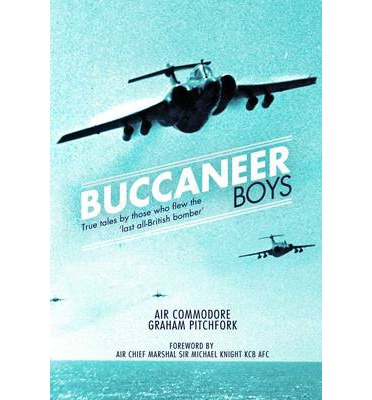If things seem bad today, then a look at the 1960s shows a time when the fortunes of Her Majesty’s Armed Forces were really beginning to suffer. The government under Harold Wilson made a succession of sweeping defence spending cuts and began to withdraw the military from places far afield associated with the days of empire. It would be easy to lapse into rose tinted images of it, but the age of empire was over and political and financial reality, then as now, had to be addressed.
His government also cut dead a number of important procurement programs including the fabled TSR2 bomber and a new fleet of aircraft carriers. For a time it looked like the RAF would get the General Dynamics F1-11 instead, but the money wasn’t even there for that and so a compromise was found in the Royal Navy’s new Blackburn NA39 Buccaneer.
If you’re looking for a classic 1960s jet then the Buccaneer ticks all the boxes with it’s beautiful shape and persuasive image of brute power. The aircraft remained in service until after the 1991 Gulf War where it provided a sterling service marking targets for GR1 Tornado bombers that had suffered losses in the early phase of the war leading to the many ghastly appearances on television by captured British and Italian airmen. But, we should also remember that several others died.
I have had a quick scan through my library of snaps and don’t recall ever seeing a Buccaneer in flight, but there is one at Hendon and I remember being very impressed at the sight of the old brute. I’ve obviously got no problem with the Harrier but I am inclined to say a Buccaneer in it’s classic blue on white naval livery would go very well in the international line up on the deck of the USS Intrepid in New York to show what classic British aircraft could look like.
Aesthetics aside, the aircraft is hardly likely to be at the top of many an enthusiast’s lists of must have histories. But, this too is just a shallow impression because for some time now Grub Street have been producing fantastic books on the classic British war jets with accounts from aircrew and so much more to illustrate what action packed lives the aircraft had, even in peace time.
This wonderful book by Air Commodore Graham Pitchfork takes us into the world of the pilots and navigators who flew the aircraft for the RAF, Royal Navy and South African Air Force. In addition to his own story he throws the book open to a succession of well written reminiscences by a group of equally enthusiastic airman nostalgic for an aircraft they appear to love above all others.The result is an entertaining and thoroughly engaging book.
We hear from a South African who had the misfortune to eject into the Atlantic from a spinning Buccaneer and many more tales from men who flew endless hours of training and practise exercises across Britain, the Far East and elsewhere.
It was all very competitive and these men were genuinely the real deal, but we are fortunate they never had to use their skills against the Warsaw Pact.
The photographs are superb and the overall light-heartedness of the book really helps the reader zip along through what are actually deadly serious events. I can remember being a kid watching TV footage of the RAF bombing the tanker Torrey Canyon foundered on rocks close to the Scilly Isles. The plan was to prevent huge amounts of oil reaching the Cornish coastline. They set the tanker ablaze in an attempt to burn off the crude and the precision of their bombing is recalled here in the book.
The book gives us a feel of what it was like to fly this magnificent aircraft, the last all-British bomber, from the decks of the famous carriers of the period – Ark Royal, Victorious and Eagle.I remember seeing Eaglejust after she had been paid off at Portsmouth at the start of a sad period of being a spares source for Ark Royal before she was finally given up for scrap in 1978.
This book is so much more than a big blob of nostalgia for times past. More importantly, it forms part of a growing collection of histories of post-war British military aviation and aviators. The quality of this book speaks for itself and I have no hesitation in recommending it to you.
Review by Mark Barnes for War History Online
BUCCANEER BOYS
True Tales By Those Who Flew the ‘last all-British bomber’
By Graham Pitchfork
Grub Street
ISBN: 987 1 90916 610 0
